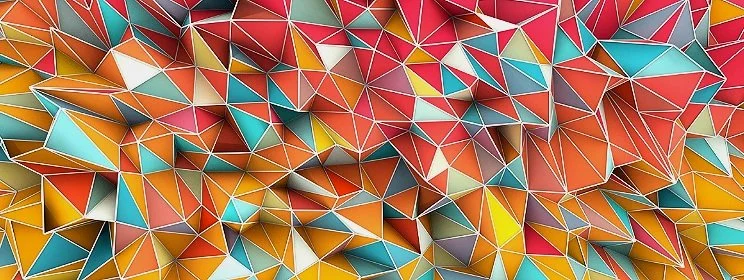From Canvas to Digital: The Evolution of Art in the Digital Age
Google Image Artist Unknown
Art has long been a mirror of human evolution, chronicling societal values, human experiences, and technological advancement. From the rudimentary cave drawings of prehistoric times to the iconic masterpieces of the Renaissance, each shift in art reflects broader cultural and technological changes. Today, we stand amidst one of the most significant shifts in the art world—the transition from traditional to digital art. This transformation not only changes how art is created and consumed but also challenges our understanding of what art can be.
1. The Origins of Digital Art
The seeds of digital art were planted in the mid-20th century when the first computers were designed to create and store images. Artists like Frieder Nake and Harold Cohen pioneered early computer-generated art, using algorithms to produce abstract works. This marked the first instance where art and technology merged to forge a new creative medium.
By the 1980s, advancements in software and computer graphics allowed digital art to grow more intricate. Programs like MacPaint on Apple computers offered new opportunities for artists to create detailed works. This period saw the birth of the term "digital art," defined by works created or presented in a digital format.
2. Traditional vs. Digital Mediums: Pros and Cons
While traditional art (using materials like canvas, paint, and pencil) remains beloved for its tangible, tactile qualities, digital art offers unprecedented flexibility and accessibility. Here are some of the advantages and disadvantages of each medium:
Traditional Art Pros:
Google Image Artist Unknown: From AI
Tactility: The physical aspect of traditional art allows for depth and texture that can be felt.
Unique Originals: Each piece is one-of-a-kind, giving it inherent value and authenticity.
Long-standing Techniques: Methods like oil painting and watercolor have centuries of heritage.
Traditional Art Cons:
Limited Revisions: Mistakes can be harder to correct.
Material Costs: Paints, canvases, and tools can be expensive.
Space Constraints: Finished works require storage and physical space for display.
Digital Art Pros:
Undo Functionality: Mistakes can be easily rectified.
Limitless Tools: Artists have access to a variety of digital brushes, effects, and techniques.
Ease of Sharing: Digital art can be shared globally with a click, widening the audience.
Digital Art Cons:
Perceived Lack of Originality: The ease of replication makes some question its uniqueness.
Tech Dependency: Requires access to hardware and software.
Learning Curve: Mastering digital tools can take time and effort.
3. Digital Platforms and Tools Revolutionizing Art
Advancements in software and technology have democratized art creation. Programs like Adobe Photoshop, Procreate, and Corel Painter offer tools that mimic real-life painting and drawing, complete with customizable brushes and color palettes. Beyond traditional-style digital paintings, 3D modeling software like Blender and animation platforms like Toon Boom have further diversified what digital artists can create.
Tablets and Styluses: Devices such as the iPad Pro paired with the Apple Pencil or specialized drawing tablets like Wacom and Huion have provided artists with the precision needed to transition smoothly from canvas to screen.
Google Image Artist Unknown
Art Marketplaces: The emergence of platforms like Behance, ArtStation, and Instagram allows artists to showcase their work to an international audience without the traditional gatekeepers of galleries. NFTs (non-fungible tokens) have further revolutionized how digital art is sold, offering a blockchain-secured method for verifying ownership of digital works.
4. The Impact on Artists and Audiences
For artists, digital media has offered new opportunities and challenges. While it’s easier to reach a global audience, the sheer volume of available content can make standing out difficult. However, the ability to blend animation, music, and interactive elements into digital art has transformed what an "art piece" can entail, broadening creative horizons.
Art Education and Accessibility: Digital tools have lowered the barrier to entry for aspiring artists. Free or low-cost platforms, along with a wealth of online tutorials and courses, empower artists who may not have the resources to pursue traditional art.
Community and Collaboration: The digital space fosters collaboration among artists across the world. Platforms like DeviantArt and Reddit’s r/Art provide forums for critiques, inspiration, and joint projects, enriching the art community with shared knowledge and creativity.
Google Image Artist Unknown: From AI
5. The Future of Art in the Digital Age
As technology continues to evolve, the boundaries of what can be considered art will keep shifting. The introduction of AI-generated art has already stirred debate about creativity, authorship, and value. These tools, such as Midjourney and DALL·E, can create impressive pieces with simple text prompts, posing questions about the role of the artist and the nature of creative work.
Looking ahead, the integration of augmented reality (AR) and virtual reality (VR) is set to add new dimensions to the viewing and creating experiences. Imagine donning a VR headset to step inside a painting or interact with a digital sculpture. Such advancements suggest that the evolution of art is far from over; instead, it is entering a new chapter where the only limit is the imagination.
Conclusion
The transition from canvas to digital reflects an evolution rather than a replacement. Art continues to be a reflection of human experiences and technological capabilities. As we navigate this new digital terrain, one thing remains certain: the core purpose of art—to evoke emotion, provoke thought, and communicate beyond words—will endure, regardless of medium.





